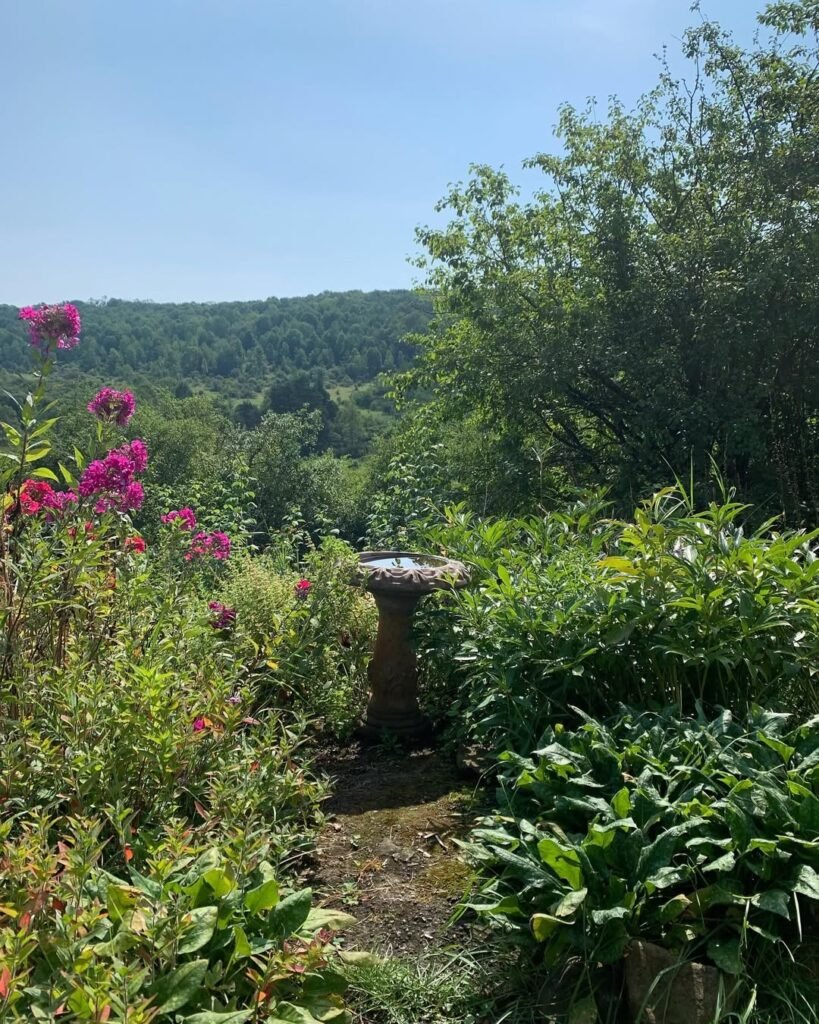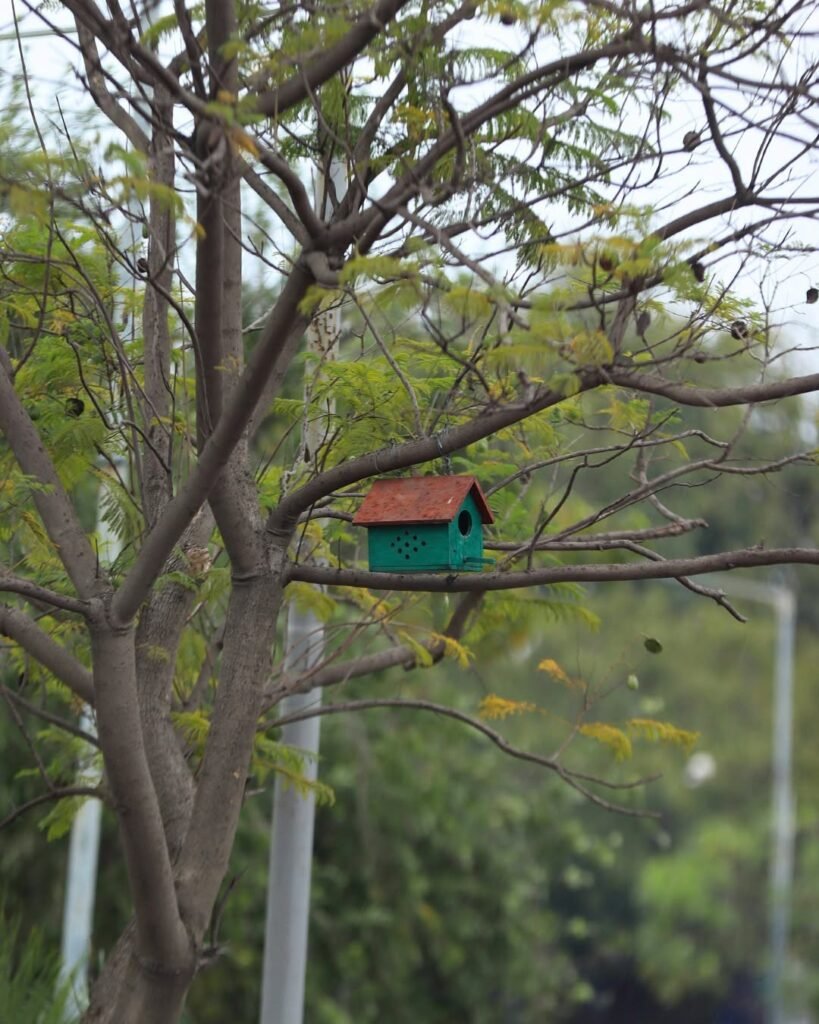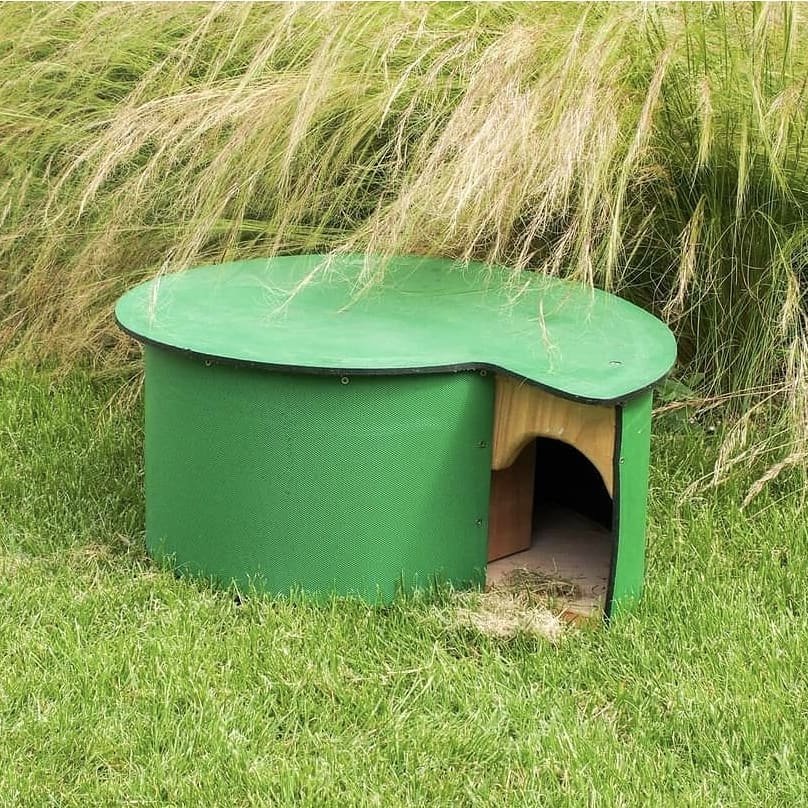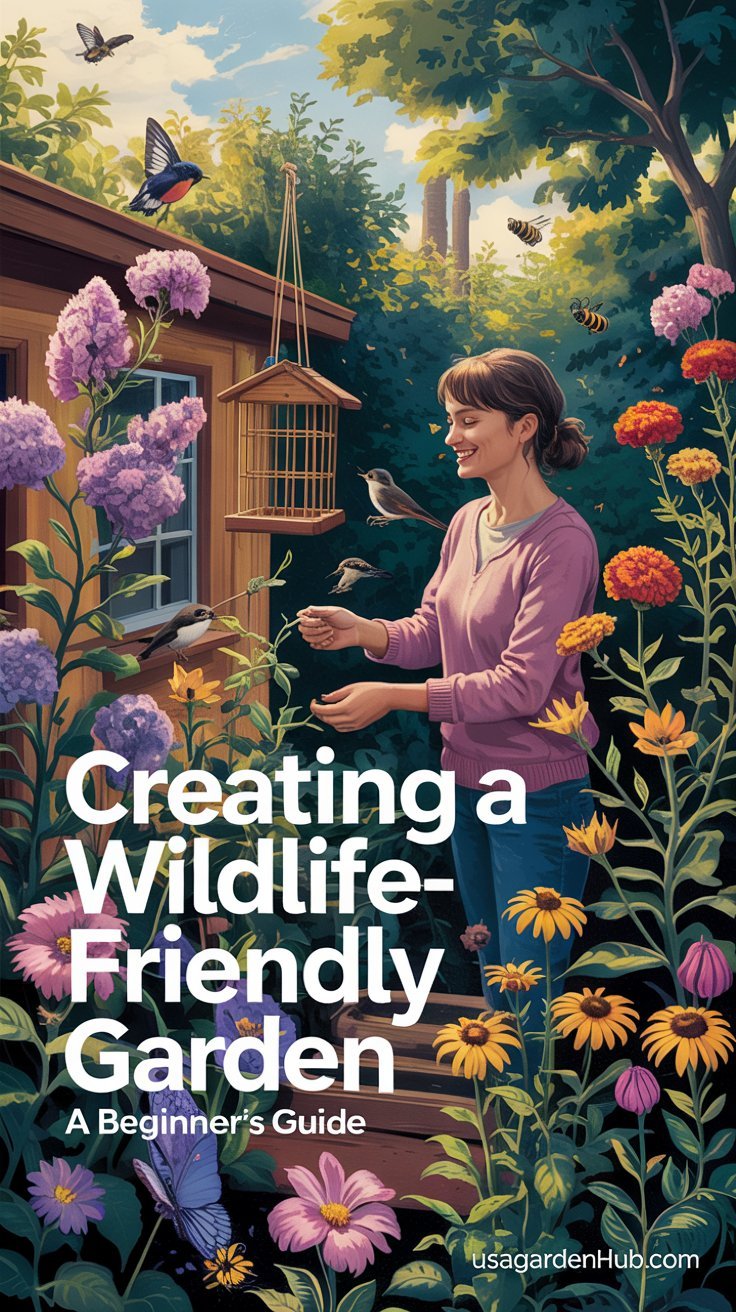Learn how to create a wildlife-friendly garden with native plants, water sources, and habitats. Attract birds, bees, and butterflies to your backyard!

Hey there, garden lovers! I’m Ashley Scott, and I’ve been digging in the dirt for over 10 years. Gardening isn’t just a hobby for me—it’s a way to connect with nature and give back to the world around us. One of my favorite projects is creating a wildlife-friendly garden, and today, I’m excited to share how you can do it too! Whether you’re a beginner or a seasoned gardener, this guide will help you turn your backyard into a buzzing, chirping paradise for birds, bees, butterflies, and more. You can find more tips on my site, USA Garden Hub, where I share all my gardening adventures.
So, what’s a wildlife-friendly garden? It’s a space designed to support local wildlife by giving them food, water, shelter, and places to raise their little ones. It’s not just about pretty flowers—it’s about boosting biodiversity and making your yard a safe haven for creatures big and small. In this article, I’ll walk you through choosing the right plants, adding water sources, building habitats, and keeping everything eco-friendly. Plus, I’ll toss in some personal stories from my own garden to keep things fun. Let’s get started!
Why Make a Wildlife-Friendly Garden?
Before we dig in, let’s talk about why this matters. Gardens that welcome wildlife help pollinators like bees and butterflies thrive—did you know a single bee can visit up to 5,000 flowers in a day? They’re key to growing our food! Plus, birds and insects naturally control pests, so you won’t need harmful chemicals. It’s a win for nature and for you. Ready to make your garden a hotspot for critters? Here’s how.
Choosing the Right Plants
Plants are the heart of any wildlife garden, and the best ones to pick are native plants. These are plants that grow naturally in your area and have been buddies with local wildlife forever. They’re low-maintenance and perfectly suited to your climate. Non-native plants might look nice, but they often don’t provide the food or shelter wildlife need.
Plants for Pollinators
Bees and butterflies love nectar-rich flowers. Here are some winners:
- Milkweed: A must for monarch butterflies—it’s where they lay their eggs!
- Lavender: Bees go crazy for this fragrant beauty.
- Sunflowers: Big, bold, and packed with pollen for bees and seeds for birds later.
In my garden, I struggled to attract butterflies until I added milkweed. Now, every summer, I spot monarchs fluttering around—it’s like a little victory dance!
Plants for Birds
Birds need seeds, berries, and shelter. Try these:
- Holly: Bright red berries that birds gobble up in winter.
- Amelanchier: Tasty berries and pretty spring flowers.
- Dogwood: Another bird favorite with berries and dense branches for nesting.
One year, I planted a serviceberry bush, and the next spring, I had robins and cardinals stopping by for snacks. It was like opening a bird café!
Plants for Other Wildlife
Small mammals, frogs, and insects need cover too. Dense shrubs like elderberry or ground covers like clover work great. To find native plants for your area, check out the National Audubon Society’s native plant database or the USDA Plant Database. Mix it up with trees, shrubs, and flowers to keep everyone happy.
Adding Water Sources
Water is a game-changer in a wildlife-friendly garden. Imagine a hot summer day—birds and bugs need a drink just like we do! Here’s how to quench their thirst:
Birdbaths

A birdbath is super simple—just a shallow dish on a stand. Keep the water fresh and clean it weekly to avoid yucky buildup. I’ve got one near my kitchen window, and watching birds splash around is better than TV!
Ponds

If you’ve got space, a small pond is magic. It attracts frogs, dragonflies, and birds. Make sure it has sloping sides so critters can climb out. Even a tiny container pond works—I started with an old tub, and soon I had frogs croaking away.
Other Water Features

A dripping faucet or small fountain adds sound and draws birds in. Just keep it safe and shallow. For more ideas, peek at the National Wildlife Federation’s water tips.
Building Habitats
Food and water are great, but wildlife also need homes. Let’s create some cozy spots:
Birdhouses and Nesting Boxes

Different birds like different setups—bluebirds want small entry holes, while owls need bigger boxes. You can buy them or build your own. Check out my guide on How to Build a Birdhouse for a fun weekend project. I put up a box for chickadees, and they moved in faster than I could say “tweet”!
Insect Hotels

These are like tiny Airbnb’s for bugs. Stack hollow stems, pinecones, or drilled wood in a frame. Solitary bees and ladybugs will thank you. I made one from an old crate, and now it’s buzzing with life.
Rock Piles and Log Piles

Leave a pile of rocks or logs in a corner. Lizards, beetles, and even snakes might hide there. It’s a bit messy, but that’s the point—wildlife loves a little chaos.
Hedgehog Homes

If hedgehogs roam your area, a small wooden box with leaves inside can be their cozy retreat. I don’t have hedgehogs in my yard, but I’ve got friends in rural spots who swear by this trick.
Sustainable Gardening Practices
A wildlife-friendly garden isn’t just about what you add—it’s about how you care for it. Here’s how to keep it eco-friendly:
Skip the Pesticides
Chemicals hurt more than pests—they kill bees, butterflies, and bird food. Instead, invite natural pest-eaters like ladybugs or use organic sprays like neem oil. I learned this the hard way when I lost a bunch of bees to a pesticide years ago—never again!
Compost
Turn kitchen scraps and yard waste into gold with composting. It feeds your plants and cuts down on trash. My compost pile is my secret weapon for healthy soil. Want to start? See my post on DIY Compost Bin: A Step-by-Step Guide.
Save Water
Use rain barrels to catch runoff or drip irrigation to water smartly. The EPA’s Sustainable Landscaping Guide has awesome tips on this. I’ve got a barrel under my downspout, and it’s a lifesaver in dry spells.
Designing Your Garden
Now, let’s put it all together with some garden design magic:
- Plan Ahead: Sketch where your plants, water, and habitats will go. Put bird feeders where you can watch them—trust me, it’s relaxing.
- Layer It Up: Tall trees, medium shrubs, and low flowers create levels for different critters. Picture a forest in miniature.
- Group Plants: Cluster flowers or shrubs to make food and shelter easy to find.
When I redesigned my yard, I mixed evergreens with flowering plants so there’s always something blooming or berrying. It’s like a year-round buffet for wildlife!
Keeping It Going
A wildlife-friendly garden needs love all year. Here’s a quick rundown:
- Spring: Plant new flowers, clean birdhouses.
- Summer: Refill water, watch for pests.
- Fall: Leave seed heads and leaf piles for food and shelter.
- Winter: Feed birds, protect plants.
I keep a journal to track what works—like when I noticed more hummingbirds after adding salvia. It’s like a detective game with nature!
FAQs About Wildlife Gardening
How Do I Attract Birds to My Garden?
Plant berry bushes, add a birdbath, and hang feeders with seeds. Birdhouses help too!
What Plants Are Best for Bees and Butterflies?
Go for nectar-rich blooms like milkweed, lavender, and coneflowers. Native is best—check the Xerces Society for more.
How Can I Make My Garden More Sustainable?
Ditch chemicals, compost, and save water. Small steps, big impact!
Wrapping Up
Creating a wildlife-friendly garden is one of the coolest things you can do with your yard. With the right plant selection, water, habitats, and sustainable gardening habits, you’ll have a space that’s alive with activity. I’ve loved watching my garden grow into a home for birds and bugs over the past decade—it’s proof that even small changes make a difference.
So, grab your shovel and start today! Whether it’s a few pollinator plants or a full-on bird-friendly makeover, every bit helps. For more gardening tips, swing by USA Garden Hub. Happy gardening!

